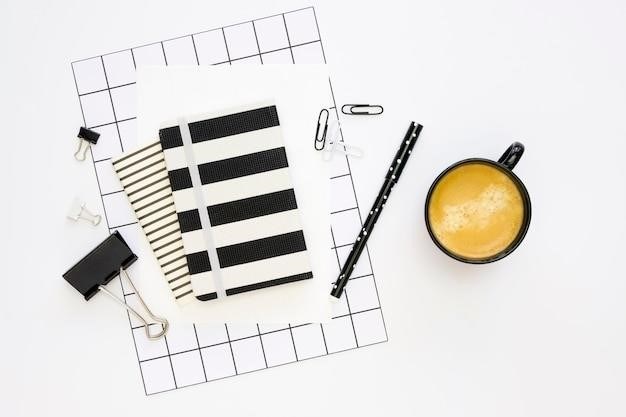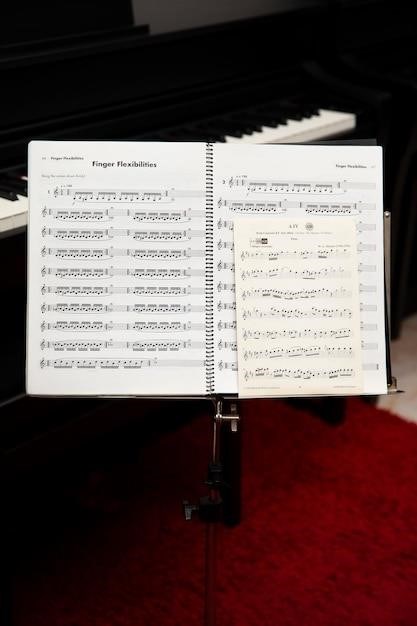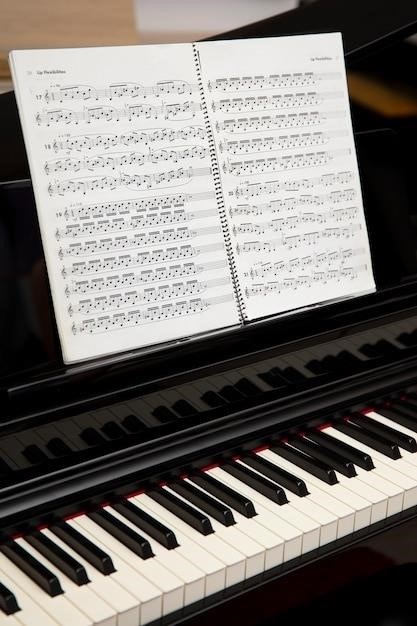Finding Free Beginner Piano Sheet Music in PDF
Numerous websites offer free‚ downloadable PDF piano sheet music for beginners. These resources cater to various skill levels‚ ensuring accessible learning. Explore these options to find suitable pieces.
Understanding Difficulty Levels
Beginner piano sheet music is often categorized by difficulty levels‚ typically ranging from very easy to intermediate. Look for indicators like “Level 1‚” “easy‚” or similar designations. These levels usually reflect the complexity of the musical notation‚ the number of notes played simultaneously‚ and the required hand coordination. Starting with very easy pieces allows gradual skill development‚ building confidence and technique. Don’t be afraid to choose simpler pieces initially; mastering easier works builds a solid foundation for more challenging music. As your skills improve‚ you can progress to more difficult arrangements.
Locating Reliable Sources for Free Sheet Music
Finding trustworthy sources for free beginner piano sheet music requires careful consideration. Reputable websites often feature user reviews or community ratings‚ providing valuable insights into the quality and accuracy of the provided scores. Look for sites with clear organization‚ easy navigation‚ and a dedicated section for beginner-level pieces. Be wary of websites with excessive advertising or those that require personal information beyond a simple email address for downloads. Prioritize sites that clearly display the sheet music’s difficulty level and offer multiple viewing options (like a preview). Checking for a clear copyright notice or attribution also helps to ensure legal access to the material. Remember‚ reliable sources prioritize accuracy and user experience.
Websites Offering Free Piano Sheet Music for Beginners
Several websites specialize in providing free piano sheet music for beginners. While the provided text mentions “Piano Maniaque” as a source for easy PDF downloads‚ further research is needed to verify its current availability and quality. Other potential sources include sites dedicated to music education or those offering a diverse collection of public domain pieces. Many websites allow users to filter by skill level‚ making it simple to locate beginner-friendly options. Remember to always check the quality of the sheet music before committing to a download‚ ensuring clarity and accuracy of the notes. Exploring various websites can reveal a wider range of musical styles and genres suitable for beginners‚ enriching the learning experience. Consider also looking for sites that provide both PDF downloads and MIDI files‚ allowing for different learning approaches.
Popular Websites and Resources
Free-scores.com and Musopen are mentioned as potential sources for free sheet music. Explore these and similar sites to find beginner-friendly piano pieces in PDF format.
Free-scores.com
While the provided text mentions Free-scores.com as a source for sheet music‚ it doesn’t offer specifics on its beginner offerings. However‚ the site’s description (“Mondial de la partition musicale”) suggests a wide selection. Expect to find a variety of pieces‚ potentially including beginner-level options. Navigation may require searching by skill level or genre. Remember to check the licensing terms before downloading and using any sheet music found on the site. The site may also have a user-submitted component‚ so quality may vary. Always preview before printing to confirm suitability for your skill level; Free-scores.com might be a valuable resource for finding free piano sheet music but thorough investigation is advised.
Musopen
The provided text mentions Musopen‚ but offers no details regarding its suitability for beginner pianists or the specific availability of easy piano sheet music in PDF format. However‚ Musopen is known as a public domain resource for classical music. Therefore‚ it’s plausible that they might host some beginner-friendly pieces. To find suitable material‚ users should carefully browse the website’s catalog‚ filtering by instrument (piano) and potentially using keywords like “easy” or “beginner.” Expect a range of difficulty levels‚ so diligent searching is key to finding appropriate scores. Remember to check the licensing information; while much of the content is public domain‚ always verify before printing and using the music. The quality of the PDFs might vary depending on the source of the uploaded files.
Other Notable Websites
While the provided text highlights specific sites like Free-scores.com and mentions Musopen‚ it doesn’t explicitly name other noteworthy sources for free beginner piano sheet music in PDF format. However‚ a simple online search will reveal many additional websites. These often include personal blogs‚ educational platforms‚ and community forums dedicated to sharing musical scores. It’s crucial to exercise caution when downloading from less-established sites‚ verifying the legitimacy of the source and the legality of using the music. Look for sites with user reviews or recommendations to gauge their reliability. Always check the file type and format to ensure it’s a printable PDF before downloading. Remember that the quality of the sheet music may vary‚ so previewing before printing is highly recommended.

Choosing the Right Piece
Selecting your first piano piece is crucial. Consider your skill level‚ choose familiar melodies‚ and explore genres you enjoy for a rewarding experience.
Considering Your Skill Level
Beginners should choose pieces explicitly labeled as “easy” or “beginner.” Don’t be discouraged by simple melodies; mastering these builds essential skills. Look for short pieces with limited hand movements and straightforward rhythms. Starting with overly complex music can be frustrating and hinder progress. Many websites categorize sheet music by difficulty level (e.g.‚ 1‚ 2‚ 3)‚ making selection easier. Focus on accuracy and proper technique over speed. Gradual progression is key to building confidence and enjoyment. Remember‚ even simple pieces offer opportunities to learn and improve; Choose music that inspires you to practice regularly!
Selecting Familiar Melodies
Learning piano is more enjoyable when you recognize the tunes. Start with well-known children’s songs‚ folk songs‚ or popular melodies. The familiarity provides a sense of accomplishment as you learn to play them. Many websites offer arrangements of classic songs simplified for beginners. Recognizing the melody helps you connect with the music‚ making practice less daunting. This approach boosts motivation and reinforces the learning process. The satisfaction of playing a recognizable tune encourages continued practice and reinforces musical understanding. Choose pieces you genuinely enjoy; this will increase your practice time and overall enjoyment.
Exploring Different Musical Genres
Don’t limit yourself to a single genre! Beginner piano sheet music is available across various styles. Experiment with classical pieces for a structured approach‚ or explore simpler jazz tunes for a more improvisational feel. Folk music often offers accessible melodies and rhythms‚ while pop songs can be fun and engaging. Exposure to diverse genres broadens musical understanding and appreciation. This exploration helps determine personal preferences and fosters a well-rounded musical foundation. Discovering different styles can spark creativity and inspire further learning. The variety keeps practice sessions interesting and prevents monotony.
Downloading and Printing PDFs
Ensure your PDF viewer is updated for optimal viewing. Print on high-quality paper for clear readability. Troubleshoot any download errors by checking your internet connection and file size.
Understanding PDF File Formats
PDF (Portable Document Format) is a widely used file type for sharing documents‚ ensuring consistent formatting across different devices and operating systems. When downloading free piano sheet music‚ you’ll likely encounter PDFs. These files preserve the original layout‚ including musical notation‚ ensuring accurate representation of the piece. Make sure your device has a suitable PDF reader (like Adobe Acrobat Reader‚ which is free) to open and view the sheet music correctly. Different PDF readers may handle the display of musical notation slightly differently‚ so experimentation might be needed to find the optimal viewing experience. Some PDF readers allow for zooming and annotation‚ helpful features for beginners learning to read music. Always download from trusted sources to avoid corrupted files.
Printing Tips for Optimal Quality
For optimal results when printing your free piano sheet music PDFs‚ select a high-quality printer setting. Ensure your printer has sufficient ink or toner to avoid faded or blurry notes. Use high-quality printer paper; thicker paper is preferable to prevent show-through from the back of the page‚ especially for double-sided printing. Before printing the entire document‚ consider printing a test page to check the quality and alignment of the notes. Adjust your printer settings‚ such as scaling and margins‚ to ensure the music is clearly legible and fits within the page boundaries. If possible‚ choose a “best” or “photo” quality print setting for the sharpest possible notation. Avoid using a “draft” setting‚ which sacrifices quality for speed. Consider using a laser printer for a crisper‚ more durable print than an inkjet.
Troubleshooting Download Issues
If you encounter problems downloading your free piano sheet music PDFs‚ first check your internet connection. A weak or unstable connection can interrupt downloads. Ensure you have sufficient free space on your device; large files require ample storage. If the download fails repeatedly‚ try using a different web browser. Sometimes‚ browser extensions or settings can interfere with downloads. If the file is corrupted after downloading‚ try deleting it and downloading it again. If the problem persists‚ check the website’s FAQ section or contact their customer support for assistance. Look for a direct download link rather than a link that redirects; these can sometimes cause issues. If the PDF opens in your browser instead of downloading‚ check your browser’s settings to change this default behavior. Clearing your browser’s cache and cookies may also resolve download problems.

Using Your Sheet Music
Practice regularly‚ focusing on proper hand position and finger techniques. Learn to read music notation effectively‚ understanding rhythm and note values. Gradually increase tempo and complexity as your skills improve.
Practicing Techniques for Beginners
Beginners should prioritize correct posture and hand position. Practice finger exercises to build strength and dexterity. Start slowly‚ focusing on accuracy over speed. Use a metronome to develop a steady rhythm and improve timing. Break down complex passages into smaller‚ manageable sections. Regular‚ short practice sessions are more effective than infrequent‚ long ones. Pay close attention to dynamics and articulation‚ adding expression to your playing. Remember to take breaks to avoid fatigue and maintain focus. Consistent practice is key to progress and enjoyment. Gradually increase the difficulty of pieces as you improve.
Reading Music Notation Effectively
Efficiently reading music notation is fundamental for pianists. Begin by familiarizing yourself with the treble and bass clefs‚ understanding their placement on the staff. Learn to identify notes on the staff‚ recognizing their pitch and position. Practice associating notes with their corresponding keys on the piano. Understand rhythm notation‚ including whole‚ half‚ quarter‚ and eighth notes‚ and their time values; Pay attention to rests‚ which indicate silence in the music. Grasp the meaning of symbols such as sharps‚ flats‚ and natural signs‚ which alter the pitch of notes. Practice reading short musical phrases before tackling longer passages. Use a combination of visual and auditory learning to reinforce your understanding of notation. Consistent practice with sheet music will significantly improve your reading skills.
Improving Your Playing Skills
Consistent practice is key to enhancing piano skills. Start with slow‚ deliberate practice‚ focusing on accuracy and proper finger placement. Gradually increase tempo as you gain proficiency. Pay attention to dynamics‚ learning to control volume and expression. Develop finger independence through exercises that isolate each finger. Practice scales and arpeggios regularly to improve dexterity and hand coordination. Listen critically to your playing‚ identifying areas needing improvement. Record yourself playing to objectively assess your progress. Consider taking lessons from a qualified piano teacher for personalized guidance and feedback. Explore different musical styles to broaden your playing abilities and find what inspires you. Remember that consistent effort and dedication will lead to significant improvement.
Beyond the Basics
Progressing to intermediate piano involves exploring diverse styles‚ joining online communities‚ and tackling more challenging pieces. This expands musical horizons and refines technique.
Progressing to Intermediate Level
Once comfortable with basic beginner pieces‚ transitioning to intermediate piano involves gradually increasing the complexity of the music. Look for sheet music that introduces more challenging rhythms‚ chord progressions‚ and hand coordination. Consider exploring pieces with wider ranges and more intricate melodic lines. Websites offering free sheet music often categorize pieces by difficulty level‚ making it easier to find suitable intermediate selections. Don’t be afraid to experiment with different styles and genres to broaden your musical experience. Remember consistent practice is crucial for improvement at this stage. Focus on accuracy and developing a stronger understanding of music theory to enhance your playing. Online resources and tutorials can provide valuable support in navigating this progression.
Exploring Different Piano Styles
Expanding your repertoire beyond a single genre is key to developing a well-rounded musical understanding. Classical music offers technical precision and elegant melodies‚ while jazz introduces improvisation and rhythmic complexity. Pop and contemporary styles provide catchy tunes and engaging arrangements. Exploring these diverse genres helps refine your skills in different areas—from precise articulation in classical to expressive phrasing in jazz. Free sheet music websites often categorize pieces by style‚ allowing you to target specific genres. Experimenting with different styles enhances your musicality and allows you to discover your personal preferences‚ ultimately leading to more fulfilling and enjoyable piano playing.
Joining Online Piano Communities
Connecting with other pianists online offers invaluable support and motivation. Dedicated forums and social media groups provide a platform to share experiences‚ ask questions‚ and receive feedback on your playing. These communities offer a sense of camaraderie‚ fostering a supportive learning environment where beginners can connect with experienced players. You can share your progress‚ discover new sheet music‚ and gain insights from fellow musicians. Many online communities are centered around specific genres or skill levels‚ making it easy to find like-minded individuals. Active participation in these online groups can significantly enhance your learning journey and provide a sense of belonging within the broader piano community.
